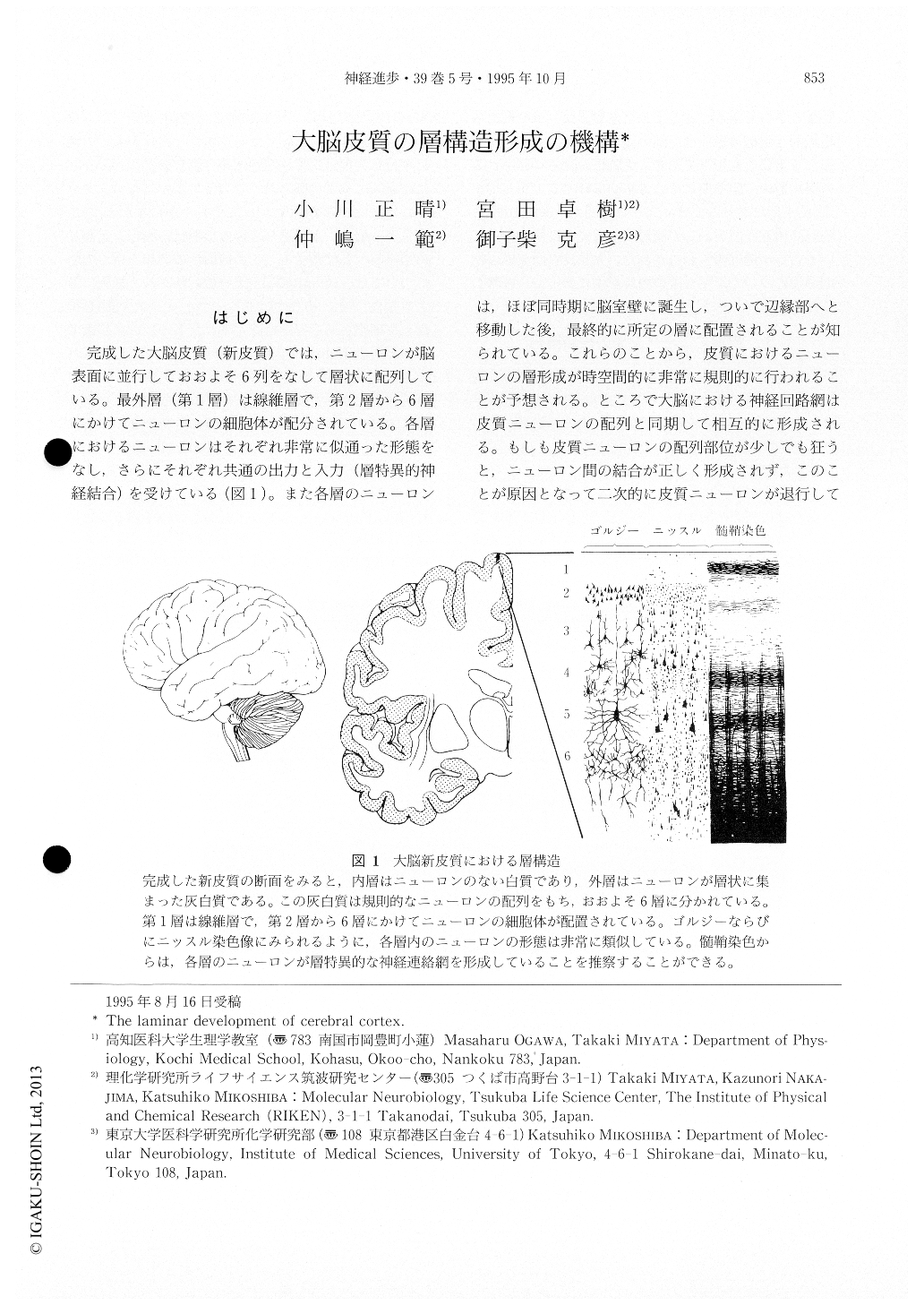Japanese
English
- 有料閲覧
- Abstract 文献概要
- 1ページ目 Look Inside
はじめに
完成した大脳皮質(新皮質)では,ニューロンが脳表面に並行しておおよそ6列をなして層状に配列している。最外層(第1層)は線維層で,第2層から6層にかけてニューロンの細胞体が配分されている。各層におけるニューロンはそれぞれ非常に似通った形態をなし,さらにそれぞれ共通の出力と入力(層特異的神経結合)を受けている(図1)。また各層のニューロンは,ほぼ同時期に脳室壁に誕生し,ついで辺縁部へと移動した後,最終的に所定の層に配置されることが知られている。これらのことから,皮質におけるニューロンの層形成が時空間的に非常に規則的に行われることが予想される。ところで大脳における神経回路網は皮質ニューロンの配列と同期して相互的に形成される。もしも皮質ニューロンの配列部位が少しでも狂うと,ニューロン間の結合が正しく形成されず,このことが原因となって二次的に皮質ニューロンが退行してしまうこともある。このように皮質ニューロンによる組織的な層構造形成は,脳の高次の機能の完成とも関連する重要な仕組みである。大脳におけるニューロンの層構造は,胎生期にその骨格がほぼでき上がってくる。胎生期における皮質ニューロン間の一過性の細胞細胞間相互作用が,この層形成に重要な役割を担っていることが最近明らかにされた。大脳皮質層形成の初期過程について,マウスの場合を例にとって,概略してみる。
In the mammalian neocortex, the different classes of neurons reside in an organized radial array of six cellular layers from the pial surface to the white matter. Positioning of a particular neuron at the particular cortical layer is an essential step in forming an elaborate neuronal network in the neocortex. Several lines of evidence indicate that the mammalian neocortex is constructed in two distinct steps. The first step is the formation of a preplate that is composed of the earliest generated neurons, including the Cajal-Retzius neurons and prospective subplate neurons.

Copyright © 1995, Igaku-Shoin Ltd. All rights reserved.


